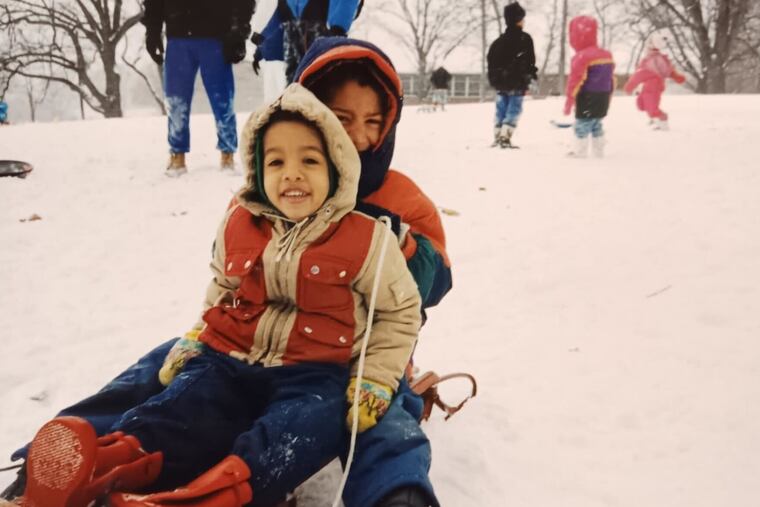Let the kids have their snow days
Virtual learning has become an increasingly popular way for school districts to handle inclement weather, but it threatens one of the most magical parts of childhood.

As a cold front struck a large part of the country, bringing with it ice and snow, school leaders had a choice to make: would school be canceled, or would the day be spent doing virtual learning?
Philadelphia School District Superintendent Tony B. Watlington Sr. granted students a reprieve. Meanwhile, New York City’s schools Chancellor David Brooks stuck to his belief that the end of snow days was “one of the good things to come out of COVID.”
As a parent and snow day enthusiast, I strongly disagree. There was nothing good about COVID-19 — and ending snow days just makes things worse.
Snow days are one of the most magical parts of childhood. I still remember my own winter mornings listening to KYW News Radio for those wonderful words: All public and parochial schools will be closed.
Our Frankford rowhouse may not have had a big backyard, but my siblings and I made use of every inch, turning the snowfall into forts, snowmen, and more. Even better was sledding at nearby Wissinoming Park. Who needs skiing and snowboarding when you can ride endlessly down a hill by your own home, no lift tickets or fancy equipment required?
Part of what made these days so special was the uncertainty. Classic childhood favorites like Christmas, birthdays, or the last day of school are predictable. They come at the same time every year. Snow days are pure luck of the draw. You might get the Blizzard of ‘96, or you might get a John Bolaris-style “Storm of the Century” that wasn’t.
Heck, the way the climate is changing in Philadelphia, kids might go for years without seeing a significant snowfall, should they really spend those rare days staring at a computer screen?
That’s not to say instructional time doesn’t matter, or that schools should shut down at the first flurry. If it is safe to get students and staff into the building, districts should try to open. Many children rely on schools for meals, and others have caregivers whose jobs might not allow them to work from home. These families need schools to open, if possible. Going to school is also fun. I loved going to school, almost as much as I loved snow days.
I wonder, however, how much I would have enjoyed school if it meant spending seven hours of my day staring at a computer screen while snow beckoned outside.
We also now know that virtual learning is not an adequate substitute for regular schooling. We tried it, and the results were terrible. There are undoubtedly some students, particularly in high school, who prefer cyber charters to traditional brick-and-mortar education, but the approach doesn’t work for most. For kindergartners and others who are still learning to read, laptop school seems especially futile. It is hard to believe that significant educational progress will happen on these days.
Instead of embracing their inner Miss Trunchbull, school administrators should think of what’s benevolently best for their students. Do they really think a one-off and unplanned day of virtual school will make a difference?
Most of the parents I know also prefer an old-school cancellation to virtual learning — many teachers do, as well. For Duncan Gromko, a teacher at Southwark Elementary School in South Philadelphia, “Snow days are special for kids, and I’m happy for them.” While Gromko acknowledges childcare can be a struggle for some parents, he also pointed out that attendance is bad on days with inclement weather anyway. That means lesson plans might have to be repeated anyway.
The push for virtual learning comes amid a series of trends that take the magic and spontaneity out of childhood in favor of soulless optimization. Kids no longer play pickup sports, instead spending their weekends being chauffeured around for expensive travel leagues. Today’s NBA stars tend to get discovered while playing AAU basketball, not at 16th and Susquehanna.
Even brands that once focused on childhood magic are starting to move on. Disney World now projects that half of its guests are “Disney adults” who are visiting without children, and that demographic is only expected to grow. McDonald’s, once known for its Happy Meal toys and indoor playgrounds, is now focused on adults, trading out their classic bright colors for millennial beige. When’s the last time you saw Ronald McDonald, let alone Grimace or the Hamburglar?
The lack of joy is seemingly confirmed by rising rates of anxiety in children. What is the point of constant optimization if that is the cost?
Instead of adding to the monotony of modern childhood and having kids sit in front of a computer, school leaders should stand up for snow days.